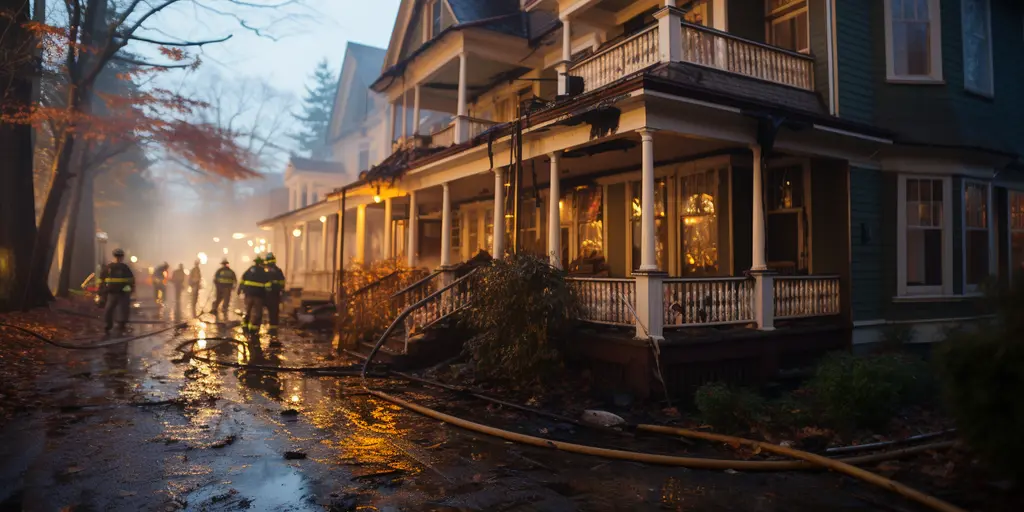Dry Star Restoration for Dummies
Dry Star Restoration for Dummies
Blog Article
The Greatest Guide To Dry Star Restoration
Table of ContentsMore About Dry Star RestorationAn Unbiased View of Dry Star RestorationThe Main Principles Of Dry Star Restoration All About Dry Star RestorationThe smart Trick of Dry Star Restoration That Nobody is Talking About
Specifically in wintertime, home heating units are an usual fire hazard. Faulty wiring or placing heating units too close to combustible materials like curtains can ignite a fire.
Data: According to the National Fire Security Organization, household chemicals are accountable for a significant percentage of home fires each year. By understanding these common causes, you can take actions to make your home much safer.
How Dry Star Restoration can Save You Time, Stress, and Money.

Key problems consist of: Water Invasion: Water can seep into wall surfaces, floors, and furniture. This can deteriorate the architectural integrity of your home. Form Growth: If water is not dried quickly, mold and mildew can begin to grow within 24-48 hours. Mold can cause health issues and additional damage to your residential property. Structural Weakening: Water can deteriorate wood frameworks and trigger steel components to rust, making your home harmful.
Next off, we will certainly dive right into the steps involved in the fire damages remediation procedure. Fire reconstruction is the procedure of cleaning, fixing, and restoring a building that has been harmed by fire.
The Ultimate Guide To Dry Star Restoration
Debris Removal and Demolition: Harmed products are safely eliminated, and any kind of harmful substances like asbestos are managed properly. Cleaning and Decontamination: Soot and smoke smells are eliminated making use of specific equipment and treatments. Reconstruction and Repairs: Lastly, the residential property is rebuilt and brought back, consisting of structural fixings and interior repair - water damage restoration mesa az. Fire damages includes a number of kinds of harm to a building: Physical Damage: This includes charring, smudging, and fragmentation of materials directly influenced by the fire.
Water Damages: Water used to snuff out the fire can cause architectural weakening and mold growth if not appropriately managed. Fire restoration professionals use specialized techniques and equipment to resolve all these kinds of damages, ensuring the residential or commercial property is risk-free and habitable once more. Next, we will dive into the actions associated with the fire damage restoration process.
From cutting edge water extraction tools to specialized devices for smoke and soot elimination, we have actually the sources needed to restore your property to its pre-loss problem. Our methods are created to be thorough and effective, lessening more damage and speeding up the recuperation process. Our team contains certified professionals that are professionals in fire damages repair.
Some Of Dry Star Restoration
Their experience ensures that every task is done right, providing you with assurance during a hard time. If you require fire damage reconstruction services, don't be reluctant to contact us. We're here to assist you recover your home and your life after the fire. Last edited on 15th of July 2024.
(https://www.indiegogo.com/individuals/38310261)If there's a fire, smoke makes certain to adhere to. While the fire's smoke is made up of aspects that make your home unsafe to be in, the damage smoke leaves doesn't quit there. Smoke will certainly float to apparently every part of your home, sticking to furnishings, design, curtains, wall surfaces, ceilings, floors, and much more.
The water will saturate into the charred materials and spread to various other locations of the home untouched by the fire. If left unattended or missed out on during fire damage repair, the water damages will only intensify with time and can cause mold and mildew growth, security concerns for your home's framework, and unattractive appearances around your area, including distorted floor covering, peeling off paint, and noticeable discolorations.
5 Easy Facts About Dry Star Restoration Shown
Water reduction is typically the initial step of the fire, smoke, and water damage remediation procedure after a damage analysis has actually been finished. This resolves the water damage head-on and includes steps to avoid further problems for your room before, during, and after remediation. Evaluation and damage control More hints to examine the level of water damageIsolation of water damage to affected areas to forbid water from spreading out to dry areasInspection of your home's structure for structural stabilityExtraction of any standing water from the propertyStructural drying out with commercial-grade equipmentSite cleaning that will clear away particles, pack out salvageable web content for reconstruction, and give way for restoration servicesWe'll also finish extra damage reduction by boarding up damaged doors and windows, using tarpaulins to openings in roofs, and completing various other actions to stop added damages and risks to your home while the repair work are occurring.
Many terms and summaries made use of by water and fire damages remediation professionals are rather self-explanatory. However, the checklist of terms below need to be of assistance when you're connecting with the business you have actually employed. Any type of action taken to stop the growth and dispersing of fungus, mold and mildew, mold, and spores. This can consist of making use of solvents or chemicals as additives or barriers on building products to stop fungi development.
Report this page